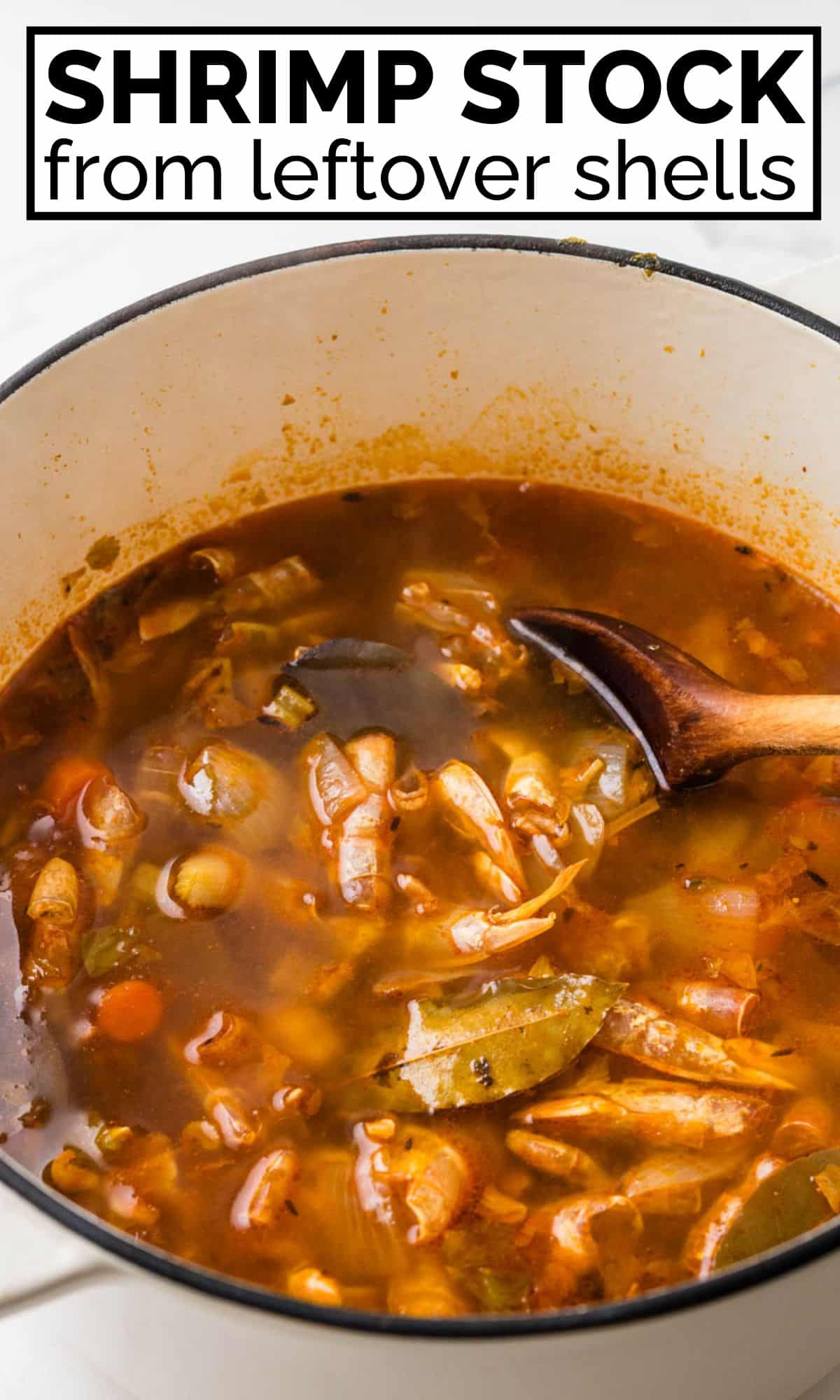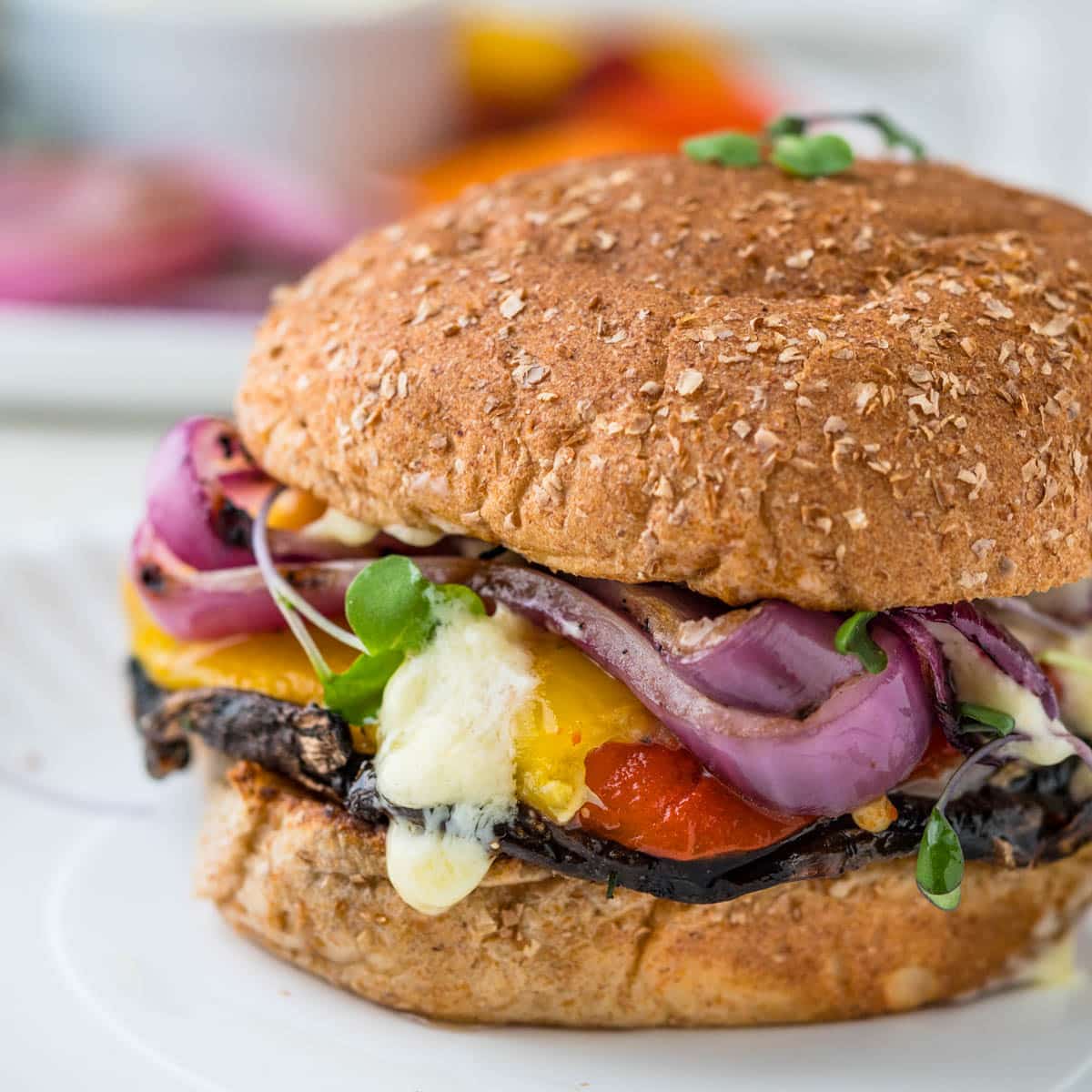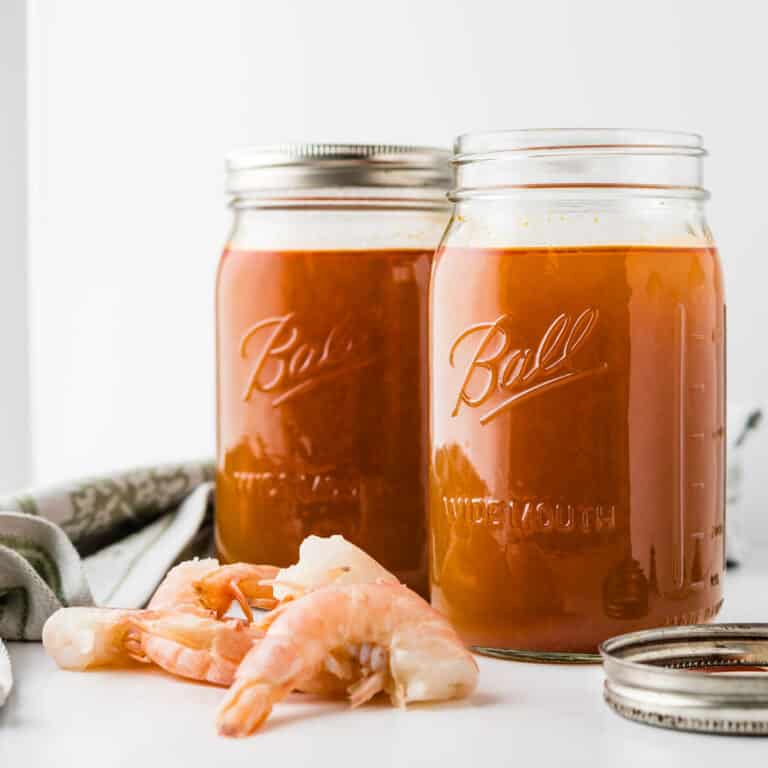Shrimp Stock
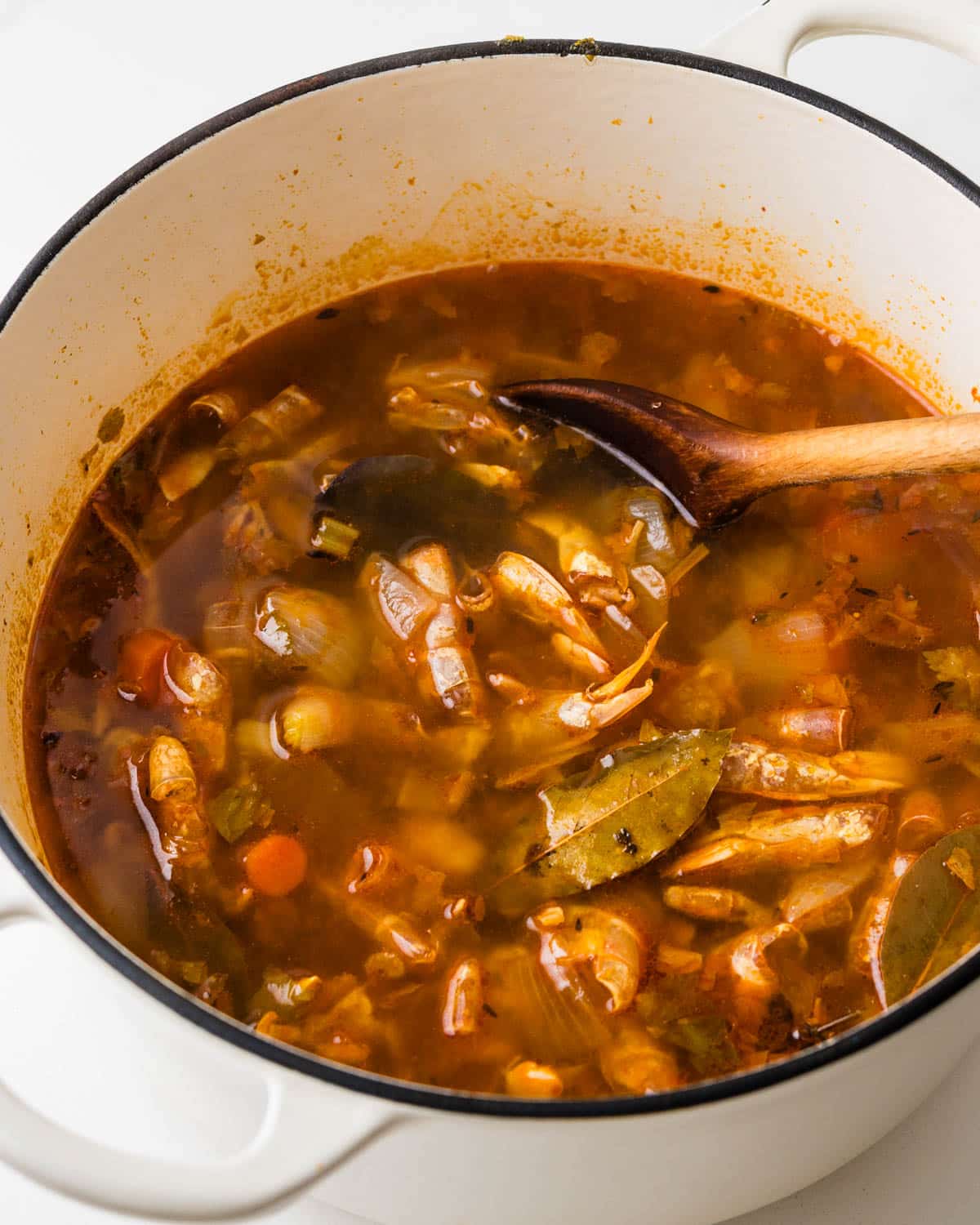
Don’t throw away those shrimp shells! Make homemade shrimp stock for seafood soups like bouillabaisse, bisques and chowders, a lush seafood sauce for pasta, or any seafood dish. It’s easy to do, and the results are outstanding!
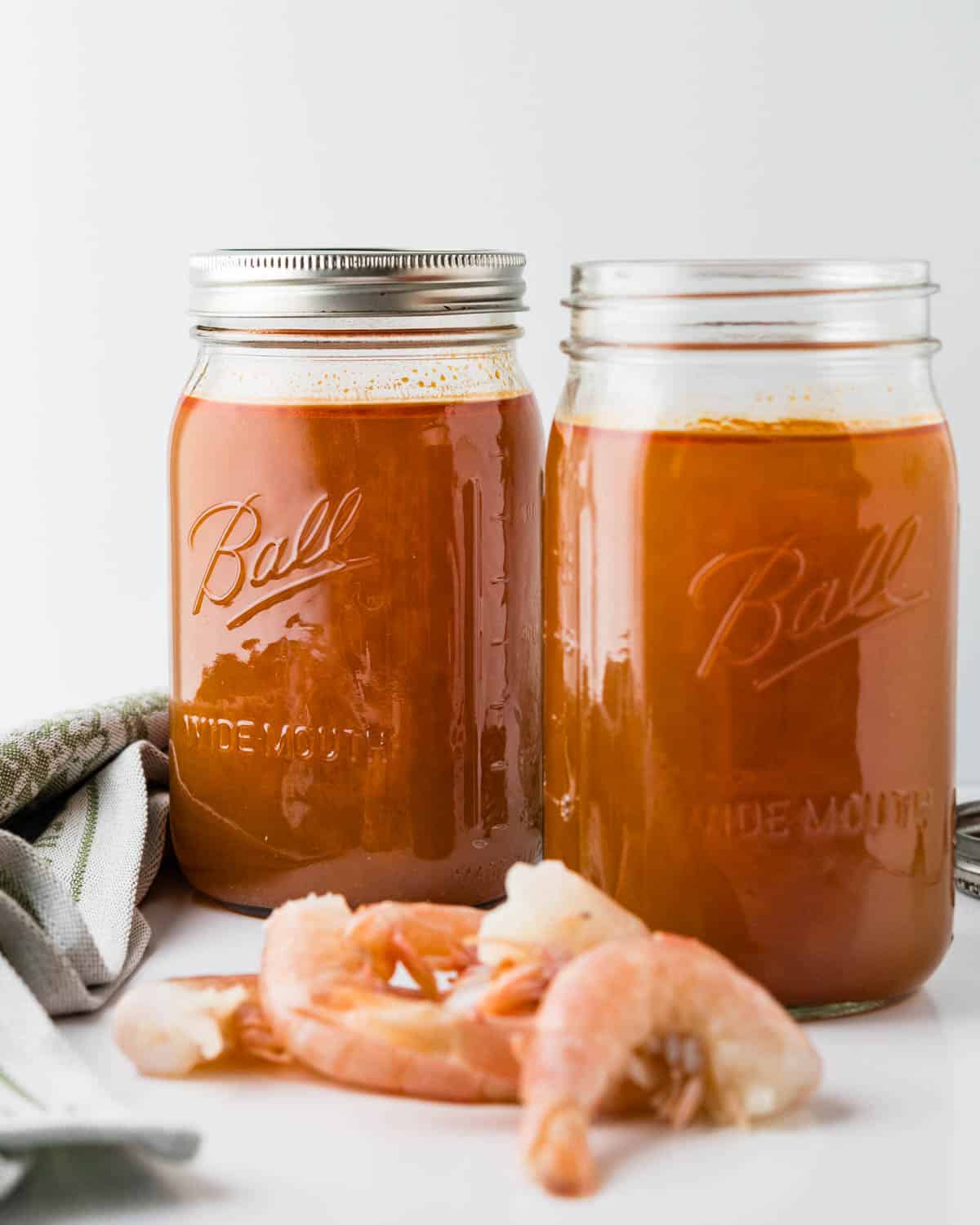
I’ve lived in South Florida for over 30 years and have always enjoyed cooking with fresh seafood, including shrimp. I’ve even gone “shrimping” from a boat and from the pier to catch my haul.
The shrimp “run” at night, close to the water’s surface. If you hang a lantern or other light over the water, their eyes will glow in the dark, making them easy to spot. Then, it’s simply dipping a net in to catch them as they swim by.
My ex-husband is an expert angler who would regularly come home with 5-gallon buckets filled with fresh, head-on shrimp.
Consequently, I’ve got a lot of shrimp recipes, many of which I’ve shared here, like this Stuffed Shrimp, which can be an appetizer or entree, this Grilled Shrimp with Pineapple Glaze, an easy and delicious summer dish and these weeknight Garlic Lime Shrimp Tacos.
I also make some fine shrimp stock and you can too with this simple recipe.
Table of Contents
Why you’ll love this recipe:
- Stocks and broths are a great way to use up ingredients that would normally be thrown away.
- It uses everyday ingredients and pantry staples.
- There is no fussy prep, and this shrimp stock recipe is ready to use in about an hour.
- It freezes well.
- Can be used in any recipe that calls for a seafood stock.
Ingredients:
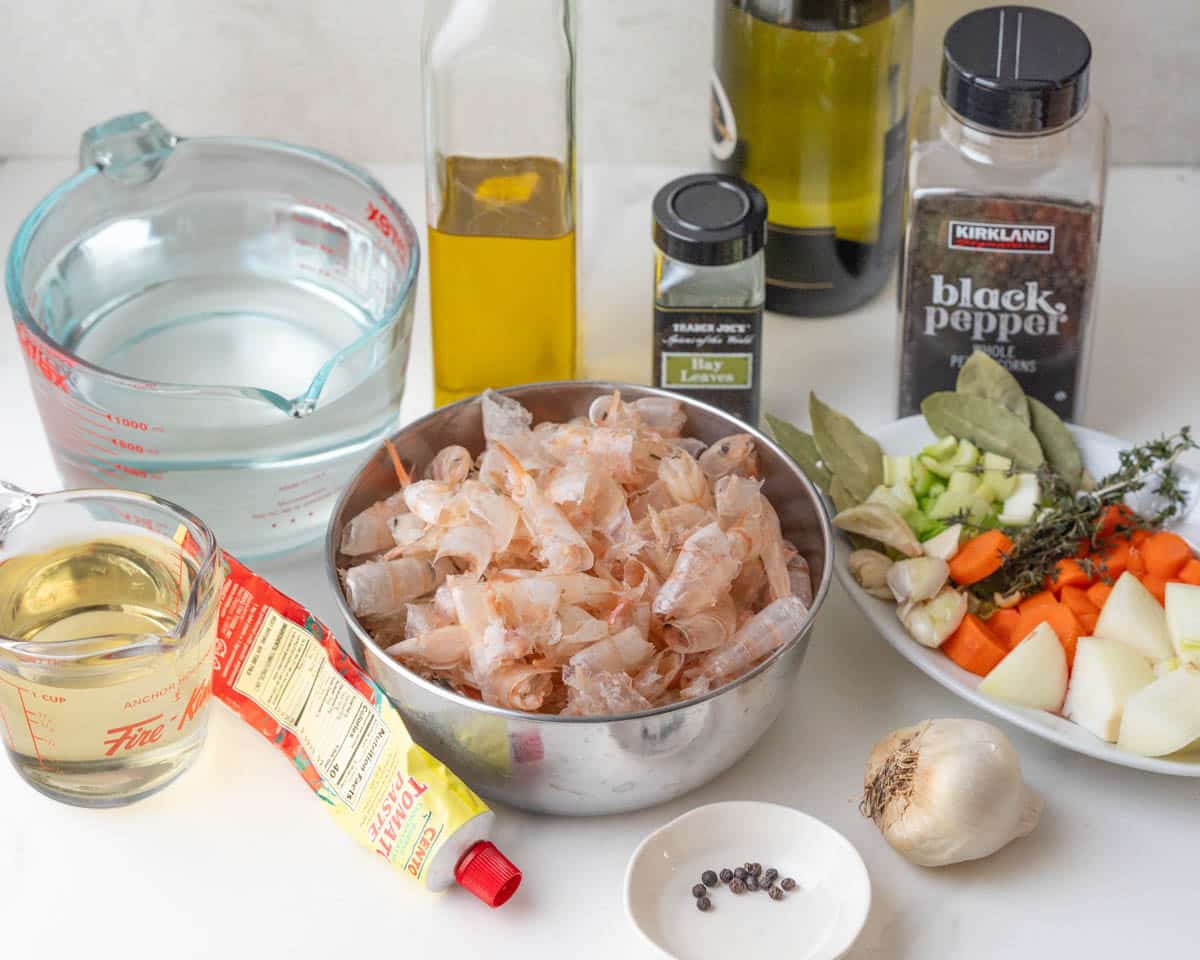
- Shrimp Shells – you can use every part from the heads (if you have them) down to the tails.
- Olive Oil – doesn’t need to be a fancy extra virgin; your everyday stuff works fine.
- Kosher salt – I like Diamond Crystal kosher salt over Morton’s because the flakes are flakier and less salty by volume.
- Celery – you can use the celery stalks and leaves.
- Carrots – to give a little sweetness and color to the shrimp broth.
- Onion – I recommend yellow onion for the shrimp broth (skip the white or red onion for this one).
- Fresh Thyme Sprigs – no need to remove them from the stem as the shrimp stock will be strained at the end.
- Dried Bay Leaf – I use 2-3 bay leaves in this stock.
- Garlic cloves – smashed with the flat end of the knife, but not minced. You can even leave the skins on.
- Whole Black Peppercorns – Tellicherry is the most common – and is what I use to refill my pepper mill.
- Tomato Paste – gives the shrimp stock an umami richness and adds a rosy color.
- Dry White Wine – for deglazing the pot and seasoning the stock.
- Water – straight from the tap is fine.
How to make shrimp stock from shells:
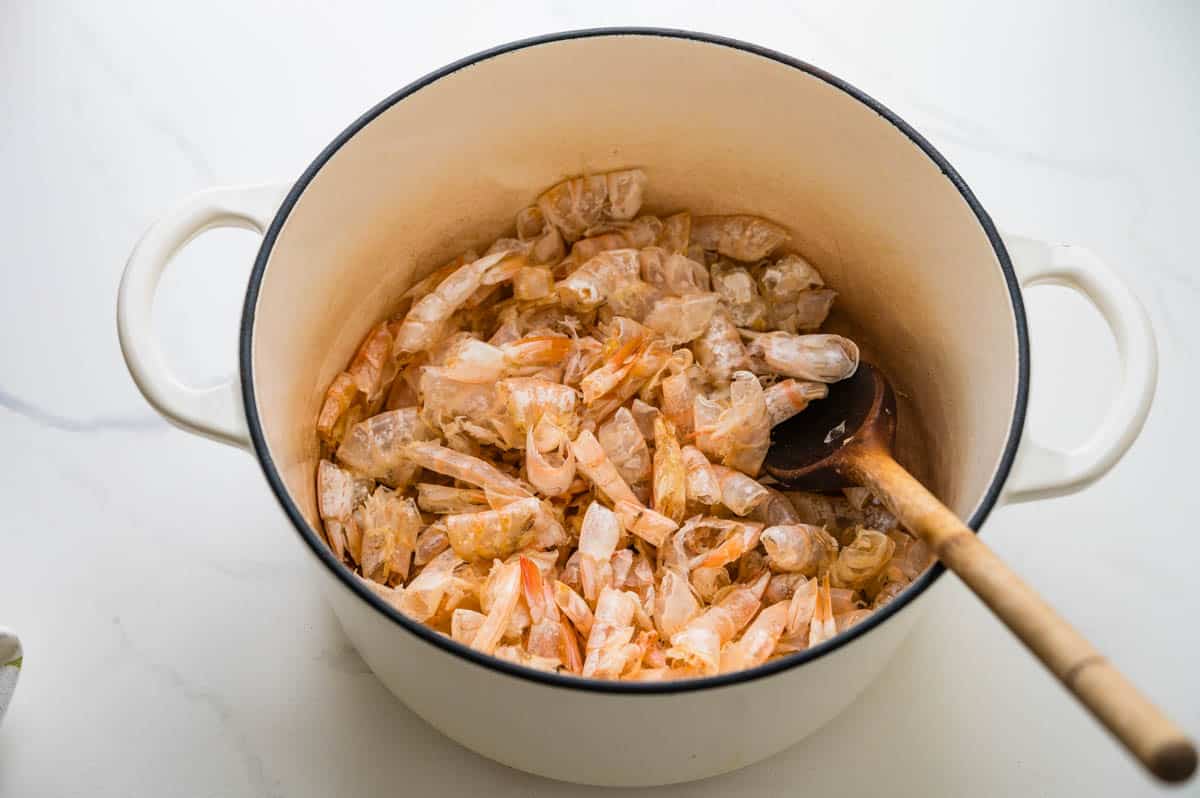
- Heat the pot over medium high heat and add a tablespoon of olive oil. Stir in the shrimp shells and cook for 5 minutes until they are fragrant and turn an orang-ish color.
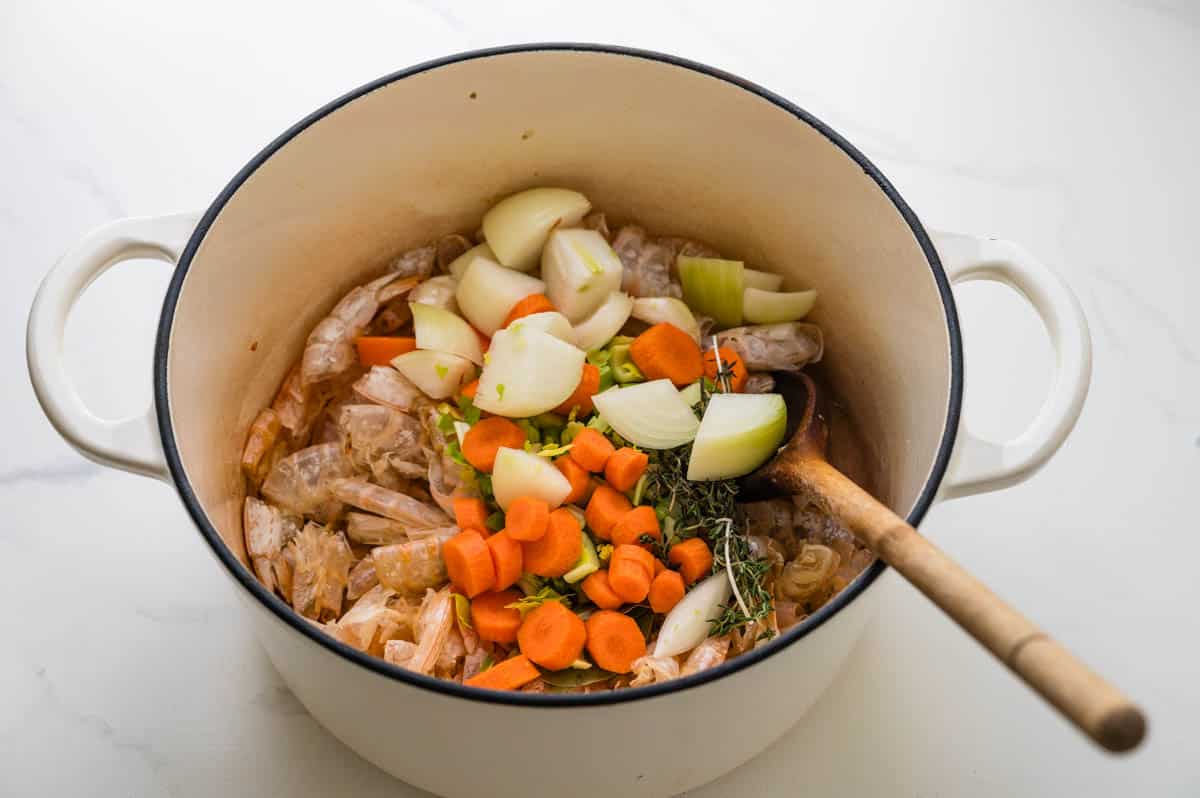
2. Add olive oil, onions, carrots, celery, crushed garlic, thyme and bay leaves. Stir to combine. Place the lid on the pot and cook the vegetables with the shells for 2-3 minutes until the vegetables soften.
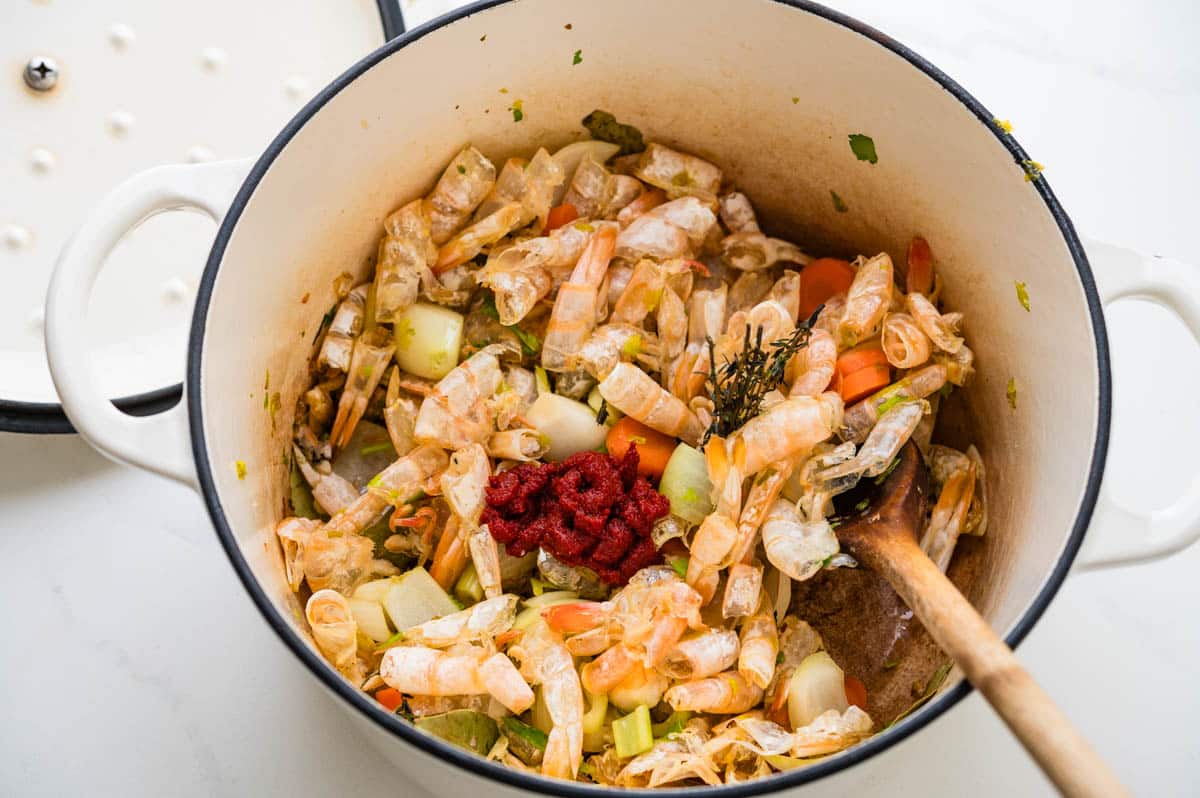
3. Add the tomato paste, stirring constantly, to coat the shells and vegetables evenly. You should start to smell the tomato paste, which will begin to caramelize when heated. Add the peppercorns.
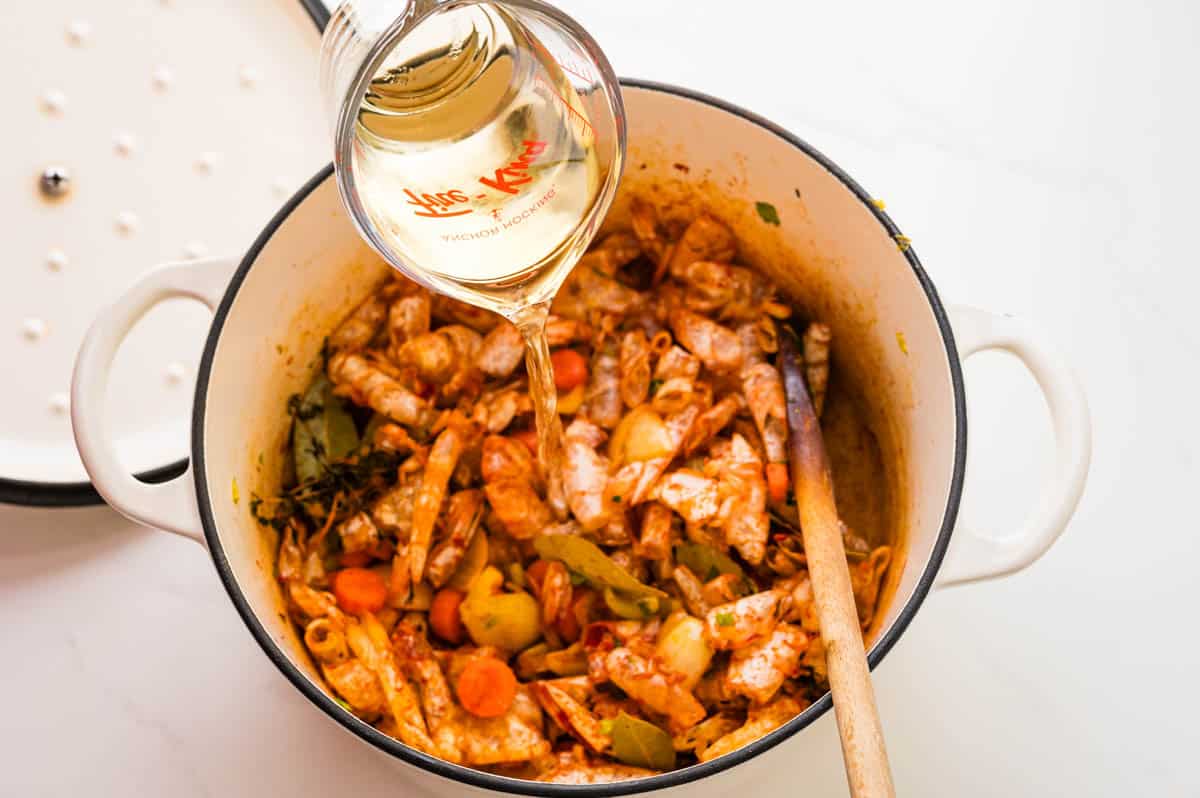
4. Deglaze the pot with the white wine, stirring constantly and scraping up any browned bits on the bottom of the pot. Bring the wine to a boil and cook for one minute.
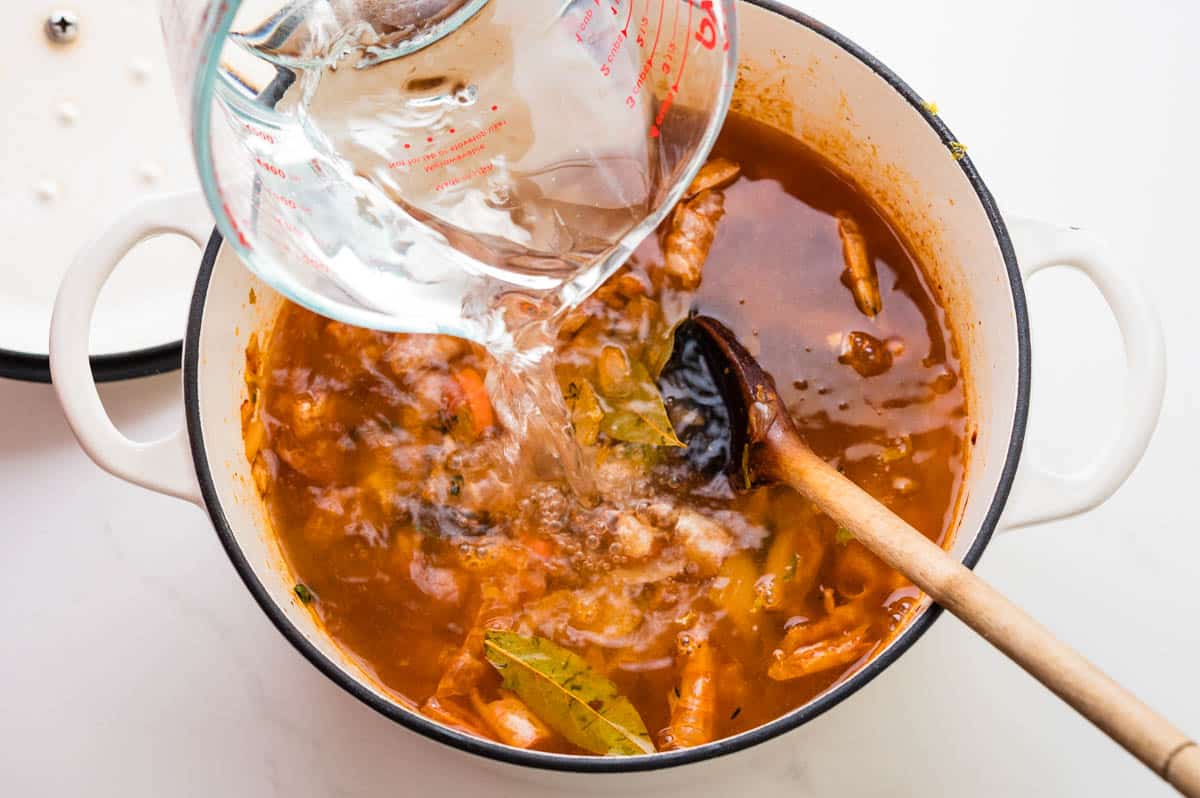
5. Stir in the water and bring the shrimp stock to a boil. Reduce heat to a simmer over medium-low to medium heat and place the lid askew on the pot so that steam can escape. Simmer for 45 minutes.
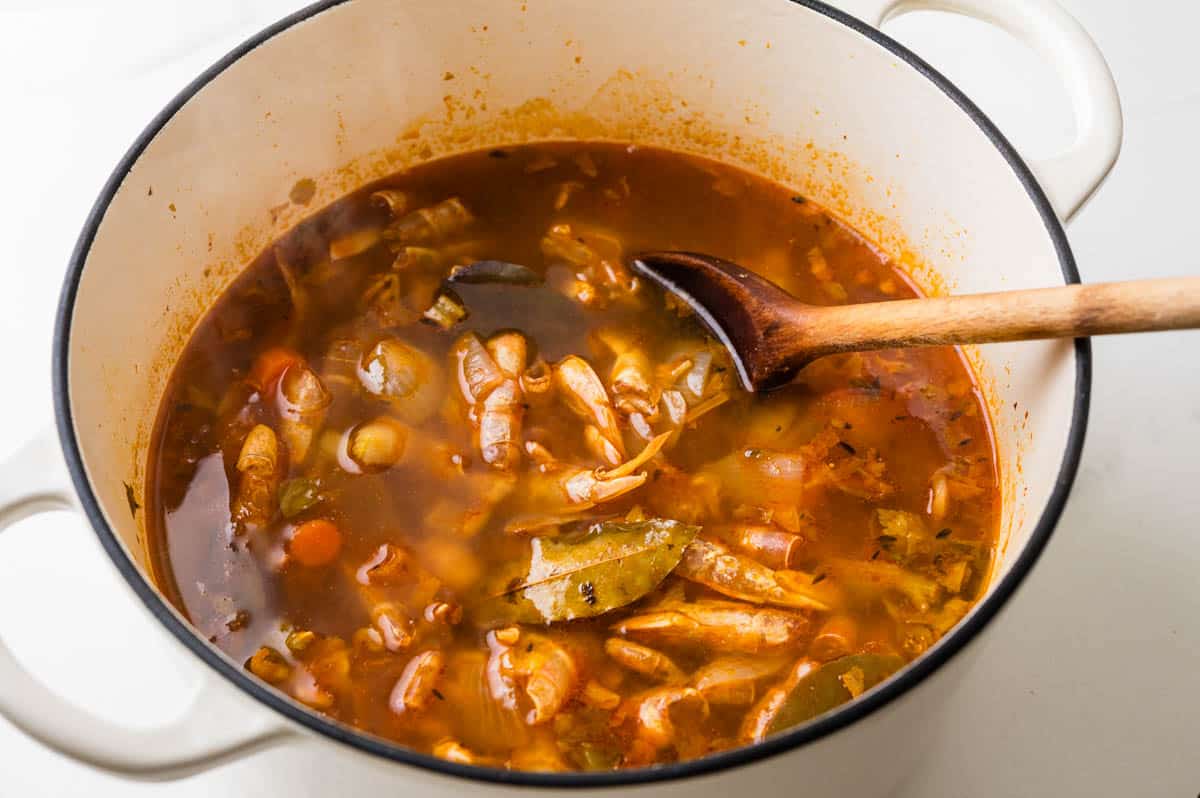
6. Remove the pot from the heat.
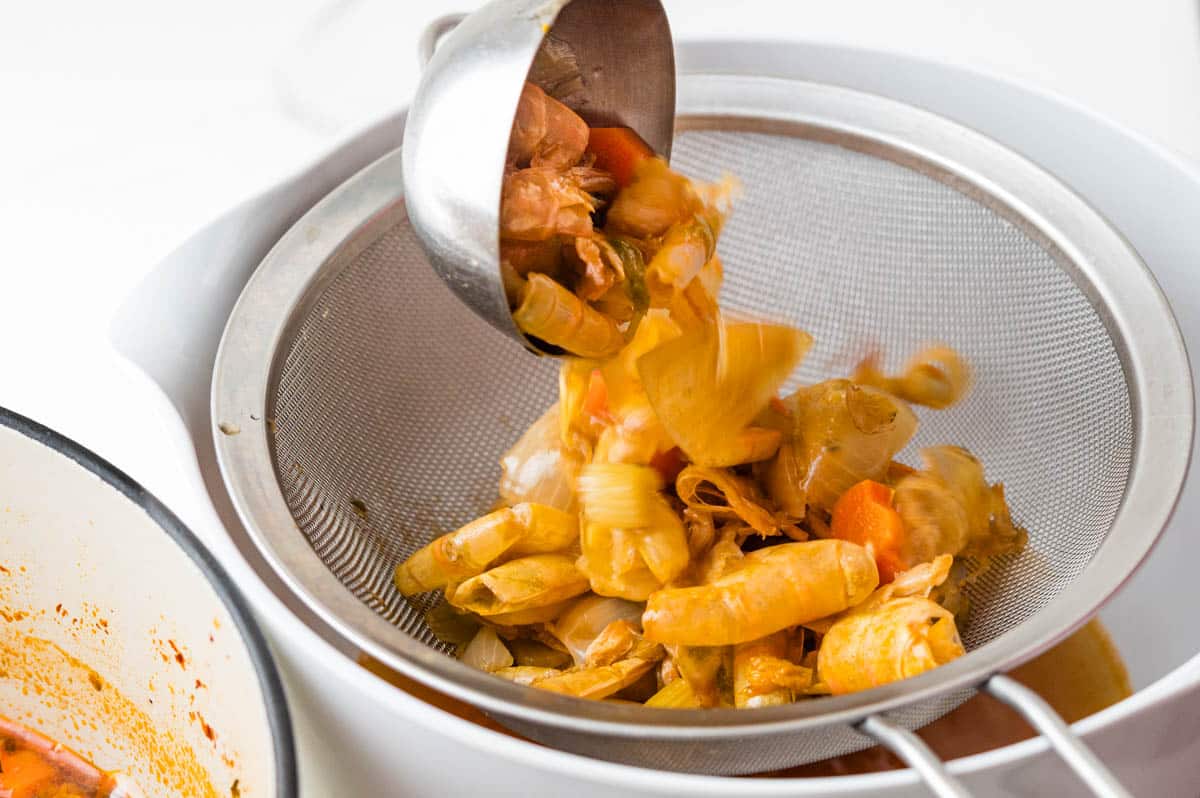
7. Use a ladle to transfer the shrimp stock and shells to a mesh strainer set over a large bowl.
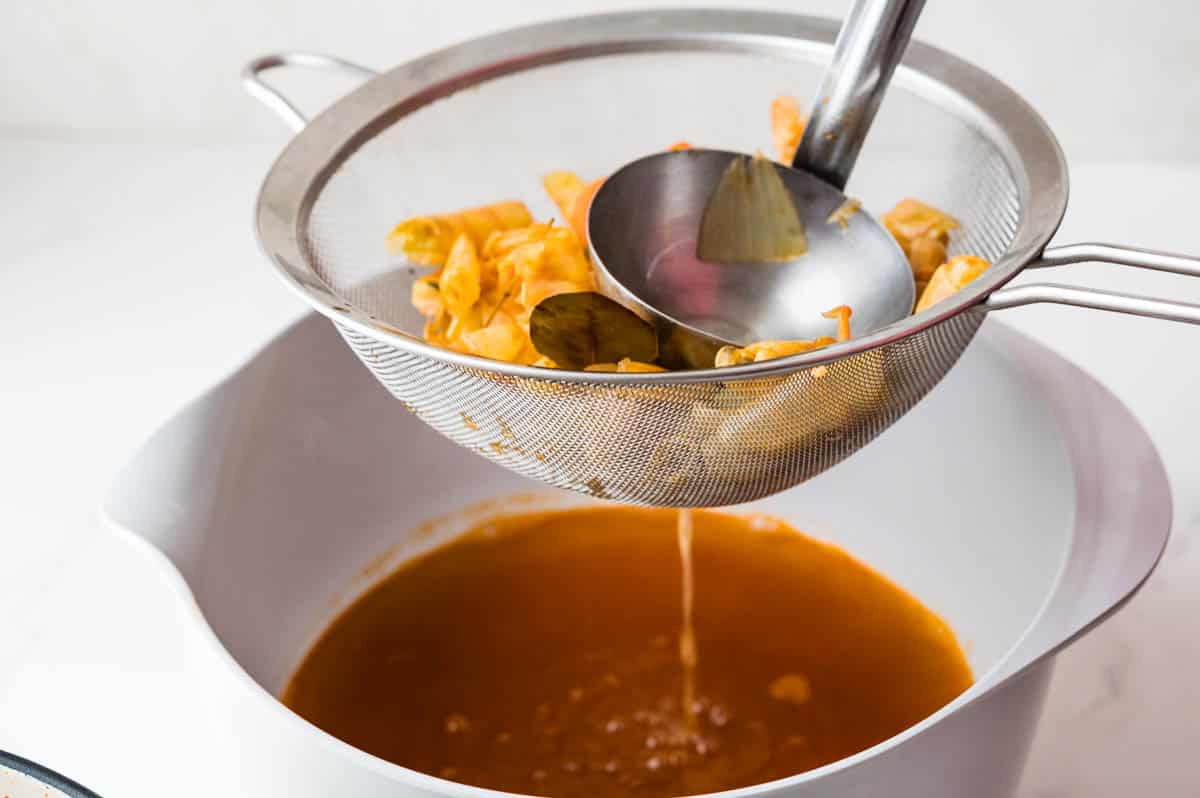
8. Press on the solids using the back of a ladle or wooden spoon to extract as much of the broth as possible. Transfer the stock to a storage container and refrigerate or use in a recipe.
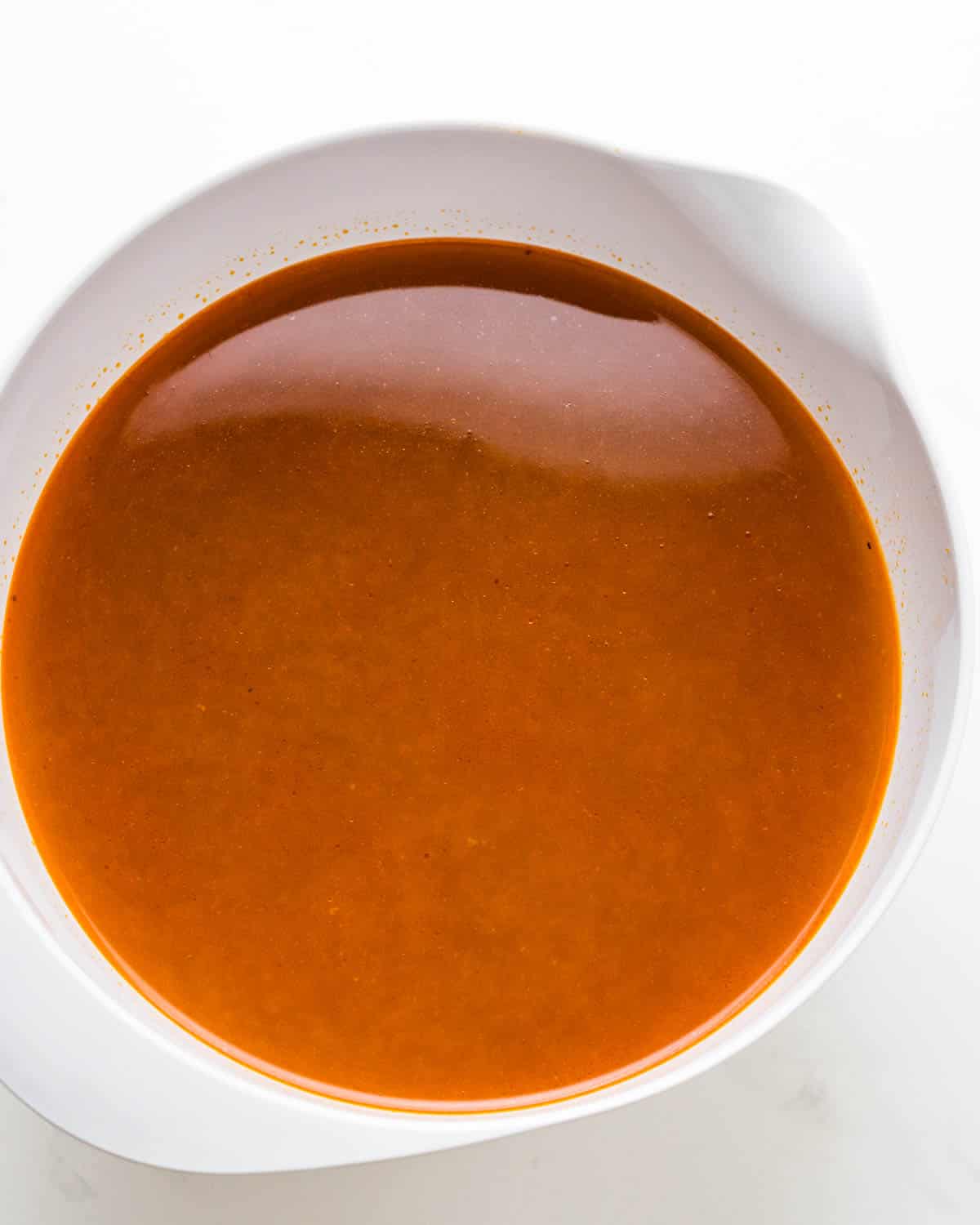
Cooking Tips:
- I recommend using a heavy pot with a fitted lid (like a Dutch oven). You want something that will provide even heating to help concentrate the flavors.
- I prefer to use raw shells for this recipe instead of ones that have been cooked.
- For the best-tasting stock, use fresh seafood from your local fishmonger (or caught from your boat or dock).
- If you don’t have enough shells (yet) to make a full pot of stock, freeze them until you’ve collected enough. I do this all the time, as there are only two people in our house, and a ½ pound of shrimp will make a meal for us.
Variations
- Add other leftover bits of seafood bones or shells to the broth for a more complex seafood stock.
- The wine adds a depth of flavor to the stock, but if you want to skip the alcohol, you can substitute it with water.
- You can season the stock to suit your tastes by adding a few teaspoons or up to one tablespoon of your favorite spice blends, such as Old Bay or this Creole seasoning.
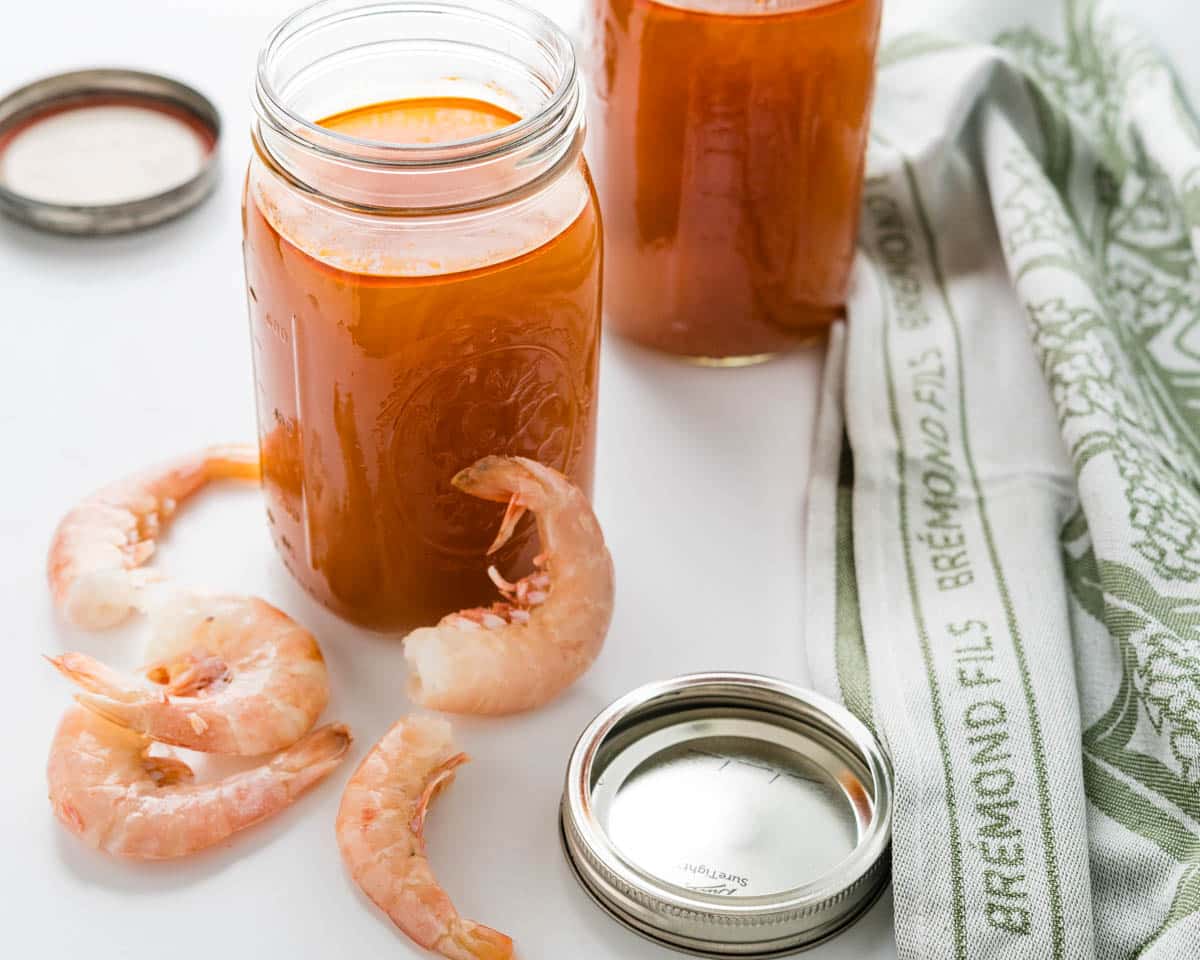
Storage
- You can store shrimp broth in an airtight container in the refrigerator for 5-7 days. I like to keep it in glass quart-sized jars because they won’t take on a fishy smell or leach color.
Freezing
- Freeze the stock in an airtight container for up to 3 months.
- To use shrimp stock in smaller portions, fill ice cube trays with the broth and freeze until solid. Then, turn the cubes into zip-top freezer bags and keep them frozen. Whenever you need some, pull out a few cubes.
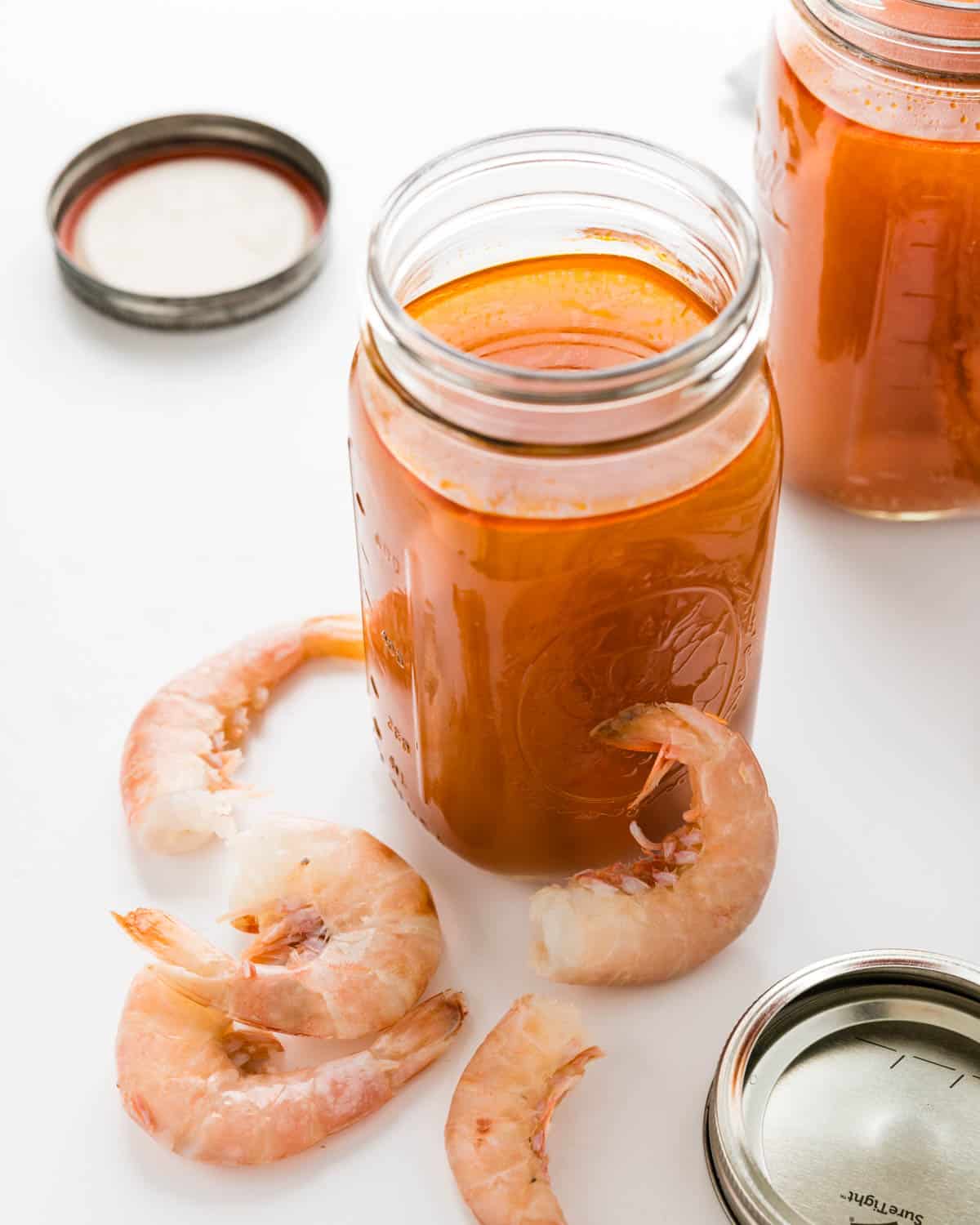
FAQ’s
This is such a versatile broth. It can be used anywhere that seafood stock is usually used, from soups, chowders, gumbos and bouillabaisse, to shrimp and grits, Newburg, or any seafood dish that needs a little liquid.
Yes, you can use shrimp heads to make stock. I also like to include the rest of the shell and tails.
It should taste like a rich seafood broth, delicate, but not fishy.
In many recipes, you can substitute clam broth, fish stock or other shellfish stock.
More stock recipes you’ll love:
- Beef Stock Recipe
- Easy Homemade Turkey Stock
- Homemade Vegetable Broth From Scraps
- Easy Leftover Rotisserie Chicken Stock
- Homemade Lobster Stock
- Instant Pot Bone Broth with Beef Neck Bones

Tried this recipe? Leave a rating and review.
Your comments and shares are invaluable to me and the thousands of readers who use this site daily. If you've made the recipe, leave a star rating and review. We want to hear how you liked it.
We'd love it if you shared the recipe with your friends on social media!
Shrimp Stock
SPECIAL EQUIPMENT:
- 1 Dutch Oven or heavy stock pot
- 1 large mesh strainer
- 2 quart-sized storage jars
INGREDIENTS:
- 4 cups shrimp shells Heads, tails, legs, etc., from about 2 pounds of shrimp.
- 2 tablespoons olive oil divided
- ½ teaspoon kosher salt
- 2 stalks celery roughly chopped
- 2 carrots roughy chopped
- 1 medium onion roughly chopped
- 4-5 stems fresh thyme
- 2-3 whole bay leaves
- 4 large cloves garlic smashed with the side of a knife.
- 10 whole peppercorns
- 2 tablepoons tomato paste
- 1 cup dry white wine
- 8 cups water
DIRECTIONS:
- Heat the Dutch oven or pot over medium high heat. Once the pot is hot, add one tablespoon of 2 tablespoons olive oil olive oil and swirl to coat the bottom of the pot. Stir in 4 cups shrimp shells and cook, stirring occasionally, for 5 minutes.
- Add the remaining one tablespoon of olive oil and 2 stalks celery, 2 carrots, 1 medium onion, 4 large cloves garlic, 4-5 stems fresh thyme, 2-3 whole bay leaves ½ teaspoon kosher salt. Stir and reduce the heat to medium heat. Cover the pot with the lid and simmer for 2-3 minutes or until the vegetables soften and the onion is slightly translucent.
- Add 2 tablepoons tomato paste and cook, stirring constantly to coat the shrimp shells and vegetables with the tomato paste and caramelize the tomato flavor slightly. Add 10 whole peppercorns.
- Deglaze the pot with 1 cup dry white wine, stirring and bring to a boil. Cook for one minute, then add 8 cups water.
- Bring the shrimp stock to a boil; reduce the heat to a simmer (medium-low heat), and cover the pot so the lid is slightly askew and steam can escape. Simmer for 45 minutes.
- Place a large mesh strainer over a large bowl. Pour or ladle the stock through the strainer. Use a wooden spoon to push on the shells and vegetables to press out all the liquid. Discard the shells and vegetables and transfer the shrimp stock to a storage container or use in a recipe.
NUTRITION:
Pin it for later!
